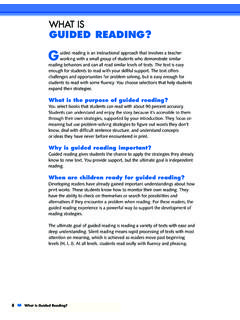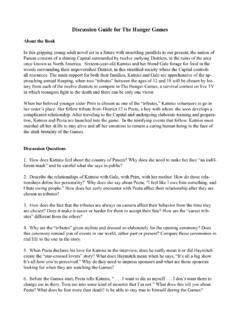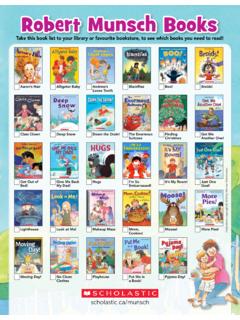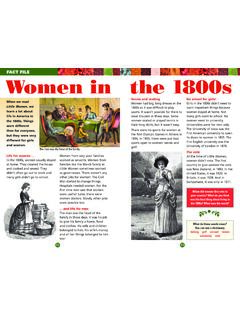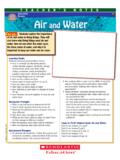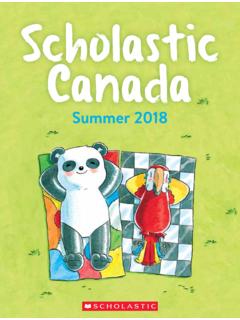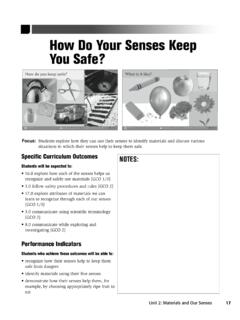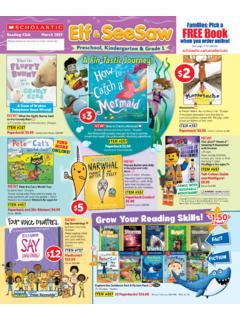Transcription of A Guide for Using Big Books in the Classroom - …
1 1A Guide for Using Big Books in the ClassroomWhy Big Books ?There s something spectacular about big book versions of good children s adults nor children can resist the urge to touch and hold them, to savour therichness of their detail. Their visual appeal is a sure hook into their Big Books are also produced for pedagogicalreasons, and Using them in theclassroom makes good teaching sense. An abundance of good children s literature intheir lives is vitally important for young children as they strive toward independentreading. Big Books can help you to extend or for some less fortunate children, toestablish the positive effects of home lap-reading experiences.
2 Large print andcolourful illustrations allow whole classrooms to share good stories, memorable poemsand interesting Books of fact. And especially when used with small groups (up toeight children), Big Books enrich oral language development through your modelledreading, through risk-free participation by the children in subsequent readings anddiscussions, and through the meaningful teaching of skills within context allpositive and therefore powerful learning This Guide ? The teaching suggestions in this Guide are based on a pattern of organizationdescribed by Priscilla Lynch in her best-selling Using Big BooksandPredictableBooks.
3 They focus first on sharing the book as a group, to give the childrenconfidence in their ability to read it. Then they highlight additional language artspotential you may want to make use of, depending on the interests and needs of thechildren and on your teaching goals. Finally they move beyond a strictly languagefocus to include across-the-curriculum activities and theme ideas for both individualand shared learning. Together these suggestions reflect a basic learning pattern forchildren: They observe someone engaged in a desirable activity. They emulate the activity.
4 They engage in similar activities, with guidance. They step creatively out on their the uses you make of an individual big book title will depend on thechildren s interest in it and on your understanding of their learning needs, we dividethe suggestions into four major types, which you will likely combine in various waysfor different titles: 2 The book experience itself, spread over several shared reading sessions (from three to seven or more, depending on the children s familiarity withbooks and the nature of the particular title). Language learning based on the book , perhaps coincidentally with one of the shared reading sessions, or during a regular language session later in theday, or at any time over the course of the year as specific needs arise.
5 Independent practice, growing out of the book though not necessarily directlyrelated to it. Theme studies, linking the book to other Books and/or to all kinds of commonhuman book ExperienceFor your initial sessions with a title, especially with young children who have littlebook experience, your purpose is two-fold: To model the basic book knowledge they need to be able to approach bookswith confidence. To share the story several times in a whole class or small group situation sofamiliarity will give the children confidence they can read recommend at least five sessions with a title, to allow for a full and rich exploration of thebook, its story and its language.
6 Some sessions may take only a few minutes;some much longer. The best ones will be those where you look up suddenlyand exclaim, Where has the morning gone! We want to stress that thedivision into sessions is a guideline only. If the children already have a gooddeal of book experience, for instance, you probably won t need to spend asmuch time introducing a particular title. Only you know your children and onlyyou can decided how much to do in each session. Besides, as we all know, the best laid plans .. Language LearningBecause language skills of all kinds are best learned in context, it makes good senseto use as a teaching resource favourite stories the children are already confident language teaching opportunities arise spontaneously as the children respond totext during shared reading sessions; others you can plan for as you return periodicallyto Big Books during the PracticeThe independent and small group activities that might evolve from the sharedexperience of a book depend to a large extent on the children and on your classroomsituation.
7 We suggest not only additional language-based activities but also severalrelating to other areas of the curriculum, such as:3 Arts activities: drawing, painting, modelling, drama, music, singing games andchants, rhythmic movement, etc. Math activities: number facts and concepts, graphs, charts, etc. Science activities: hands-on experiments, field trips, researching, makingobservations, sorting and classifying, etc. Social studies activities: community-centered research, field trips, interviewing,mapping, Big Books will fit easily into your current theme plans; others may suggest newtopics to explore.
8 EvaluationEvaluation of growth in the children s language and background knowledge resultingfrom your use of a big book will vary depending on the potential of the book and theactivities you choose. For most Books you will: Observe the children s responses to the book , to you and to their peers. Collect samples of their work to chart their growth in specific areas. Arrange a conference to share their enthusiasms and problems and to makeplans for further ! The first purpose of a big book is enjoyment. But these Books can alsobe powerful motivators for learning.
9 Shared book experiences help to model thereading process for beginning readers, encouraging prediction, providing thenecessary confirmation, and ensuring the integration of new knowledge. And theyprovide teaching opportunities in other areas as book Experience(Session 1) Settle the children comfortably around you. Show them the book . Invite them to look at the front and back covers. Talkabout the author, the illustrator, the dedication page, where the story starts, theillustrations, etc. Ask them questions like What do you see? What do you think this book isabout?
10 Or What do you think will happen in this book ? Record theirresponses on the chalkboard or on chart paper, placing their initials besidetheir your enthusiasm during several encounters with the story and itsillustrations. Throughout your discovery and exploration of the book , establish in anatural way such concepts as beginningand ending, frontand back, leftand right,letters, spaces, words, sentences, etc. You can t assume the children understand thesebasic 1 With the children settled comfortably around you, read the whole storythrough, enthusiastically, joyously.
